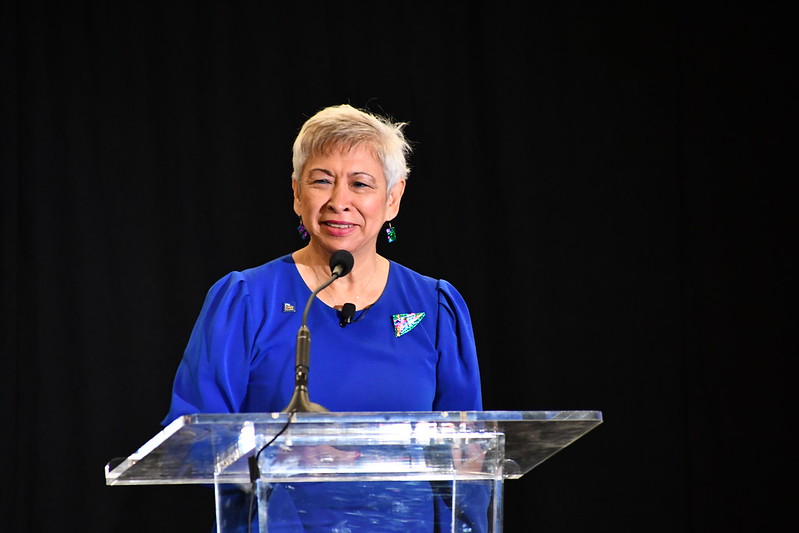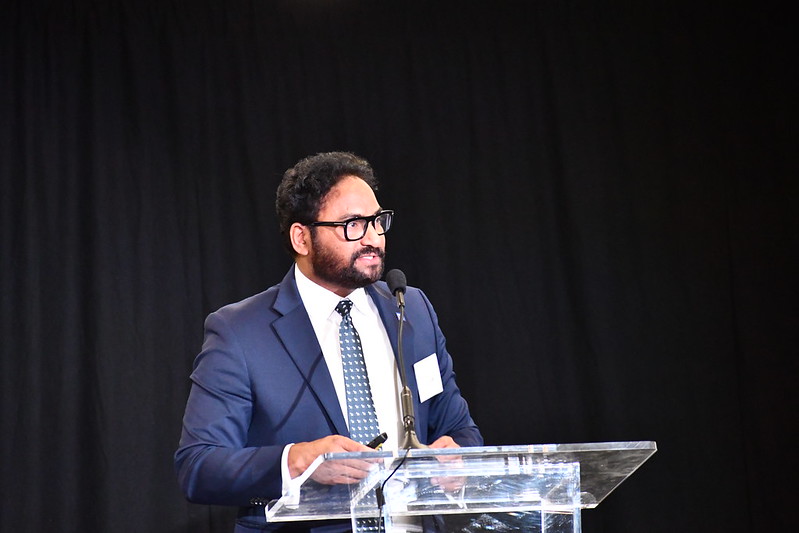Academic, health care, industry, wildlife, agriculture and government representatives from across the Commonwealth recently took part in the first annual meeting of the Pennsylvania One Health Consortium, a coalition of experts focused on improving health and well-being for all Pennsylvanians.
Convened by the University of Pittsburgh School of Public Health, consortium coordinating institution, the meeting was held June 25-27 at the Farm Show Complex and Expo Center in Harrisburg.
One Health is a perfect prism with which to examine the multitude of factors that influence public health, noted Maureen Lichtveld, MD, MPH, Jonas Salk Professor in Population Health and dean of Pitt Public Health.

Genetics, for example, make up just 5% to 8% of an individual's disease risk. Environmental, behavioral and social influences—the essence of public health research—pack the biggest punch by far. "The goal is to predict, prepare and, ultimately, prevent diseases," she said.
“This is a historic moment that brings everyone to the same table to share one vision for a healthier, more sustainable, more connected future for Pennsylvania,” said Russell Redding, MS, Pennsylvania Secretary of Agriculture, said in welcome to the nearly 100 attendees. “Each of you has a piece of the process.”
Redding remembered learning the essential value of teamwork while growing up on his family’s dairy farm. “Everything is connected,” he said. “Human health doesn’t stop at the doctor’s door and animal health doesn’t stop at the farm gate.”
Presentations and activities highlighted the complex interdependence of human, animal, plant and environmental health. Speakers shared a wide range of perspectives from veterinary science, agriculture, wildlife ecology, agribusiness, environmental conservation, government relations and biomedical research to illuminate the transdisciplinary intersections critical to support robust public health and biodiversity.
For example, animal pathogens like pseudorabies and African Swine Fever can devastate hog populations and interrupt the food supply, Alex Hamberg, VMD, PhD, state veterinarian, explained in a keynote address.
Highly pathogenic avian influenza (HPAI), first identified in the 1990s, has even been found in Antarctic penguins, and was detected most recently in Pennsylvania in 2022. Disease spread has resulted in the loss of nearly 200 million birds across the country, said Hamberg. The disease has since spread to cattle, cats, other mammals and a few people whose work brings them into close contact with birds and cattle.
Veterinary science and academic research can contribute to the development of updated testing and diagnostic tools for HPAI and other animal diseases, Hamberg said.
New diseases—many of which originate in other species—continue to emerge, bringing with them new threats to human health, noted Suresh Kuchipudi, PhD, MVsc, MBA, professor and chair, Department of Infectious Diseases and Microbiology, Pitt Public Health. HIV and SARS CoV-2, the novel coronavirus that causes COVID-19, first arose in animals (HIV in nonhuman primates and SARS CoV-2 most likely in bats), circulating through other animals before becoming transmissible to humans. Global pandemics of HIV and COVID-19 resulted in tens of millions of deaths and continue to infect people today.
“Today, we have an unprecedented global movement of people,” Kuchipudi added, which can confer ever greater scope to new diseases.

Other speakers included experts in animal science, environmental engineering, conservation, infectious diseases, biology, wildlife ecology and plant science from the University of Pennsylvania, Pitt, the Pennsylvania Department of Conservation and Natural Resources, Phipps Conservatory and Botanic Gardens, the U.S. Department of Agriculture Animal and Plant Inspection Service, Penn State Extension Service and Temple, Penn State and Delaware Valley universities.
“Important connections are being forged at this meeting,” said Lichtveld, urging coalition members to harness their collective strengths and skills to conduct research, drive innovation and inform policy decisions and public engagement in challenges that affect communities.
Next steps for the coalition involve development of a strategic plan for future collaborations and activities.
-Michele Dula Baum
Photos: Adam Orbell